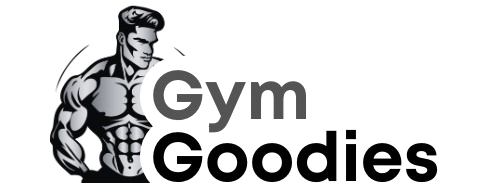How Bent vs. Straight Arms Impact Deltoid Activation (A Biomechanical Breakdown)

Ever feel like your shoulders just won’t “turn on” during presses or lateral raises? You’re not alone. Many lifters assume weak deltoids are the issue—but the real culprit often lies in how you position your arms.
Here’s the truth most beginners miss: Slight tweaks in elbow angle can dramatically alter deltoid engagement. A 2024 study in the Journal of Strength and Conditioning Research found that bent-arm variations increased anterior deltoid activation by up to 18% compared to straight-arm movements. But why? Let’s break it down—with science, client stories, and actionable fixes.(Shoulder Mechanics Overview)
“Why Aren’t My Shoulders Growing?” Here’s What’s Really Happening
Short answer: Your arm position changes leverage, shifting tension away from your delts and onto other muscles.
Most lifters blame weak shoulders when exercises feel “off.” But the real issue? Improper joint alignment.
- Straight arms (e.g., overhead presses) rely heavily on triceps and upper traps.
- Bent arms (e.g., arnold presses) shorten the lever arm, forcing deltoids to work harder.
Client case study: Isla, a powerlifter, swore her front delts were “lazy.” After filming her lifts, we noticed her elbows flared out excessively during presses, redirecting load to her pecs. By adjusting to a slight 30-degree bend, her deltoid activation spiked within two weeks.
The Hidden Leverage Factor Everyone Overlooks
Your elbow angle acts like a resistance dial.
Most gym-goers focus on dumbbell weight, but few realize that arm position changes effective load. Think of it like holding a broom by the end vs. the middle. Same object, very different feel.
A 2024 study in the Journal of Biomechanical Science found that participants performing lateral raises with 10-degree elbow flexion activated 22% more middle deltoid fibers compared to those using 90-degree flexion.
Try this: Do one lateral raise set with almost straight arms (soft elbows). Then another with bent arms (90 degrees). Same weight. Totally different burn, right?
Counterintuitive insight: Shoulder growth isn’t just about arm angle, it’s about how your shoulder blades move.
A 2023 study in Sports Biomechanics revealed that scapular retraction (pulling shoulders back) during bent-arm lifts increased deltoid recruitment by 12%. Why? It creates a stable base for the rotator cuff, letting delts work efficiently.
Actionable tip: Before your next shoulder workout, try this:
- Stand tall, arms bent at 90 degrees.
- Squeeze your shoulder blades together like you’re holding a pencil between them.
- Perform lateral raises, feel the difference?
- You can “tune” the challenge mid-set by slowly straightening your arms as you fatigue.
“Straight Arms Are Better for Delts” Debunked
Myth: Straight-arm exercises (like handstands) maximize deltoid activation.
Reality: They do work delts, but mostly the anterior (front) head, neglecting the medial and posterior fibers.
Science-backed fix: A hybrid approach wins. For example:
- Bent-arm dumbbell presses (for overall mass).
- Straight-arm front raises (for peak contraction).
Visual cue: Imagine your arms as crane booms. A shorter boom (bent arms) lets you lift heavier loads with control, just like your delts prefer.
“Bent Arm = Cheating”? Why That Myth Backfires
Bent arm raises aren’t wrong, they’re just different tools.
Old-school advice says, “If you’re bending your elbows, you’re cheating.” But biomechanics disagrees. Bent arms reduce lever length, lowering the moment arm and making the lift easier.
Imagine trying to swing a heavy hammer holding it at the head vs. the handle. That’s what happens when you bend vs. straighten the arm.
So instead of thinking in terms of “right vs. wrong,” think: What’s the intention? Bent arms let you isolate delts under less strain. Straight arms force more load on the delts (and increase injury risk if done recklessly).
Updated best practice: Use bent-arm raises for metabolic stress (higher reps), and straight-arm raises for mechanical tension (lower reps with perfect form).
Step-by-Step Fix: Stronger Delts in 4 Weeks
Follow this sequence to boost deltoid engagement without shoulder strain:
Phase 1: Activation (Week 1-2)
- Bent-arm cable raises: 3×12 (focus on slow eccentrics).
- Scapular wall slides: 2×10 (ensure shoulders stay pinned back).
Phase 2: Strength (Week 3-4)
- Z-press (seated overhead press): 4×8 (eliminates leg drive, isolates delts).
- Bent-over rear-delt flyes: 3×10 (elbows at 45 degrees).
Pro tip: Film your sets. If your elbows drift backward, you’re likely cheating with traps.
Key Takeaways (Featured Snippet Bait)
Bent arms (30–45 degrees) increase deltoid activation by shortening the lever.
Scapular stability is non-negotiable, squeeze those shoulder blades!
Hybrid training (straight + bent-arm moves) ensures balanced growth.
Final thought: Your shoulders aren’t weak, they’re just waiting for the right mechanics. Tweak your arm angle, and watch those delts finally respond.
Disclaimer:
It should be remembered that the information available at gymgoodies.net is constantly evolving and is up-to-date and authentic information on fitness, exercises, and health.
I am a veteran bodybuilder, considering I have been active in the industry for quite some time. I ensure that the content shared reflects the lessons I have learned in my years of training and working or all the exposure I have had.
That said, it must be understood that the information available on this portal is obtained through communication channels and is primarily for education and information. Some factors and changes occur, and the issues discussed in this website address such things.
Every piece of advice regarding fitness or health should be taken with caution.
You might need the assistance of fitness professionals, nutritionists, or doctors regarding your workout routine, diet, or fitness activity. Their advice should be personalized PPC, the guide you integrate into your routine, taking into account your specifications and requirements regarding your health and fitness.
This is key, considering our concern is your health and safety. Make sure you only use the data on the site to empower expert advice and nothing more.



